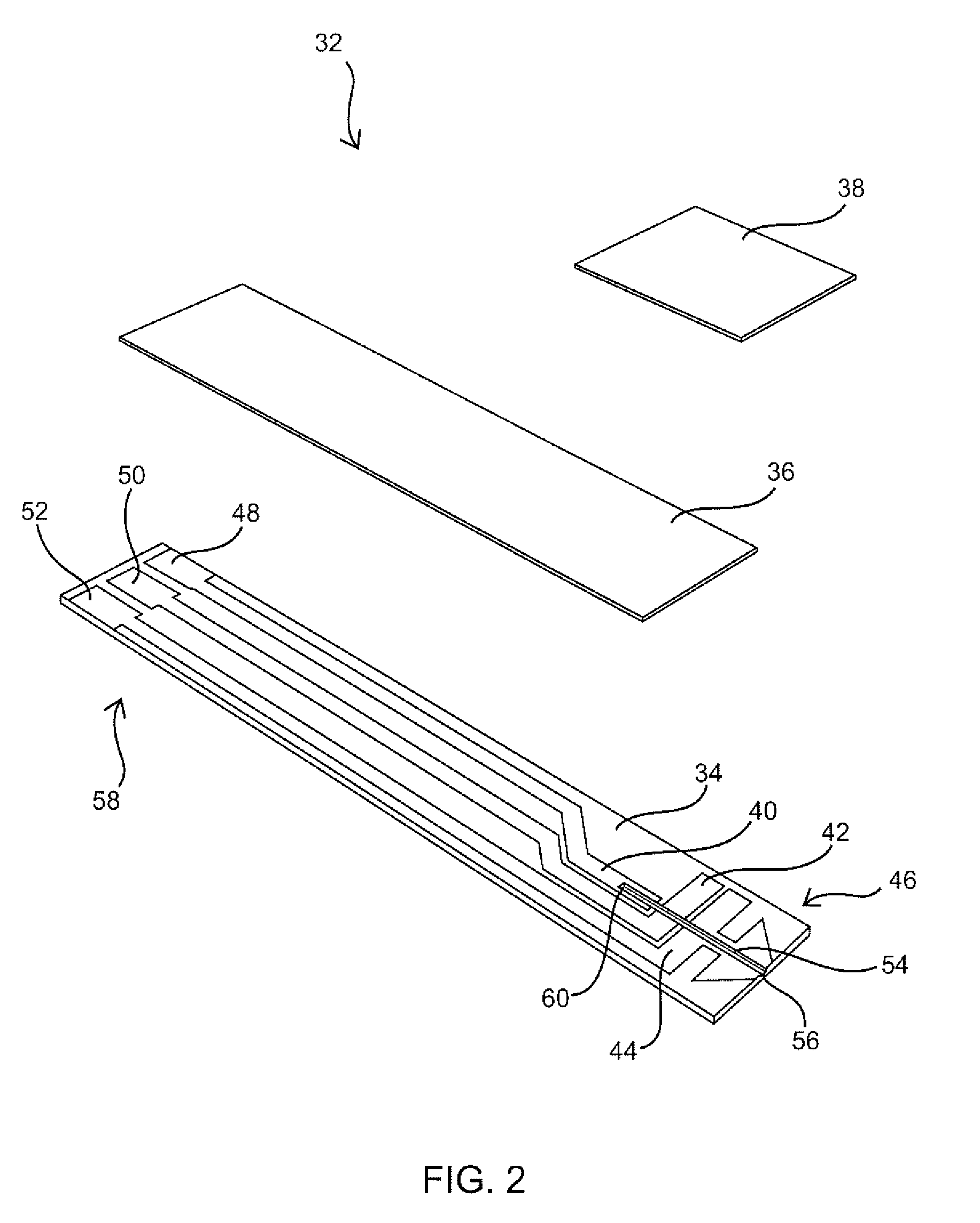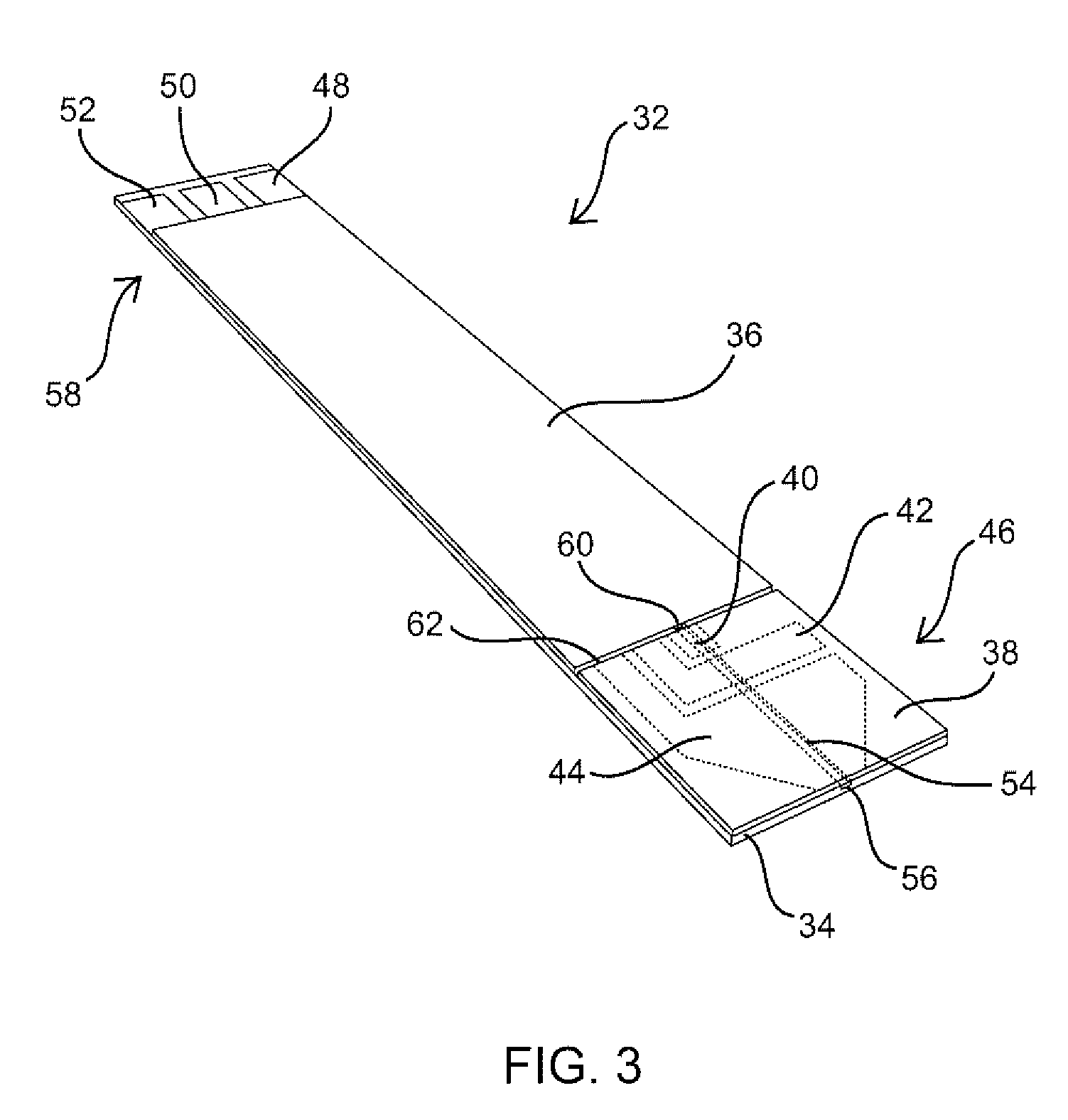Embossed cell analyte sensor and methods of manufacture
an analyte sensor and embossed cell technology, applied in the field of analyte sensors, can solve the problems of gumming problems, low printing accuracy, and inability to manufacture repeatable cells at the same size,
- Summary
- Abstract
- Description
- Claims
- Application Information
AI Technical Summary
Benefits of technology
Problems solved by technology
Method used
Image
Examples
Embodiment Construction
[0029]The following description focuses on one variation of the present invention. The variation of the invention is to be taken as a non-limiting example. It is to be understood that the invention is not limited to particular variation(s) set forth and may, of course, vary. Changes may be made to the invention described and equivalents may be substituted (both presently known and future-developed) without departing from the true spirit and scope of the invention. In addition, modifications may be made to adapt a particular situation, material, composition of matter, process, process act(s) or step(s) to the objective(s), spirit or scope of the present invention.
[0030]FIG. 1 shows a top view of an exemplary analyte system 10, a glucometer system in this particular embodiment. System 10 includes a handheld meter 12 and disposable test strip sensor 14. Test strip 14 can be inserted into and removed from test strip port 16 of meter 12 for physical and electrical interconnection therewi...
PUM
| Property | Measurement | Unit |
|---|---|---|
| Length | aaaaa | aaaaa |
| Volume | aaaaa | aaaaa |
| Volume | aaaaa | aaaaa |
Abstract
Description
Claims
Application Information
 Login to View More
Login to View More - R&D
- Intellectual Property
- Life Sciences
- Materials
- Tech Scout
- Unparalleled Data Quality
- Higher Quality Content
- 60% Fewer Hallucinations
Browse by: Latest US Patents, China's latest patents, Technical Efficacy Thesaurus, Application Domain, Technology Topic, Popular Technical Reports.
© 2025 PatSnap. All rights reserved.Legal|Privacy policy|Modern Slavery Act Transparency Statement|Sitemap|About US| Contact US: help@patsnap.com



